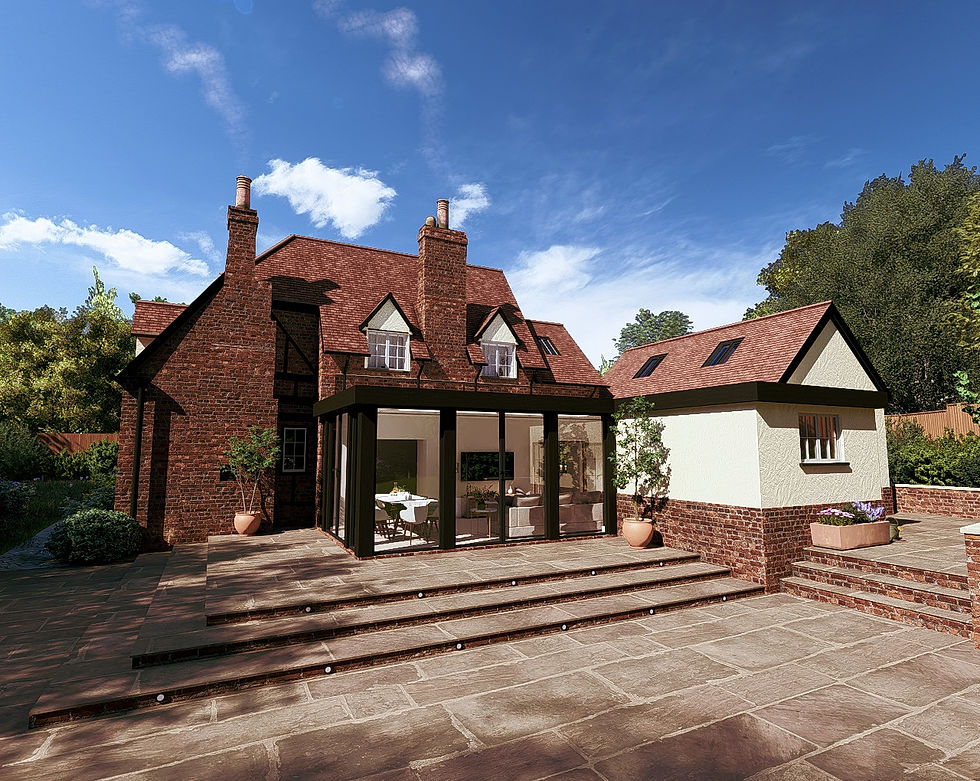
What is a non-material amendment? (NMA)
Section 96A of the Town and Country Planning Act 1990, as amended by the Planning Act 2008, allows for applications for 'non-material amendment' to planning permissions. This process bypasses the need for a new planning application, enabling you to modify the existing permission while still being subject to the original conditions and time limits.
There is no statutory definition for what constitutes 'non-material' changes. Instead, it varies depending on the context and is determined by the local planning authority.
When determining whether a change is material or not, a local planning authority must consider the effect of the change, along with any previous changes made, on the original planning permission granted.
A 'non-material amendment' could be characterised by the following:
-
It constitutes a very small change.
-
It does not deviate significantly from what was described in the planning permission.
-
It does not conflict with any conditions stipulated in the permission.
-
It does not contravene planning policy.
-
It does not substantially alter the external envelope.
-
It does not increase the height of the roof.
-
It does not introduce or relocate windows or other openings that could impact neighbouring properties.
A NMA application will have a 4-week determination period typically.


What are the possibilities and benefits when carrying out a single storey extension?
Single-storey extensions provide a versatile way to expand your home without the complexities of multi-level construction. Here are some common uses and design ideas:


What are the possibilities and benefits when carrying out a single storey extension?
Single-storey extensions provide a versatile way to expand your home without the complexities of multi-level construction. Here are some common uses and design ideas:
What is a S73 Application?
A Minor Material Amendment application is commonly know as a Section 73 application. There is no statutory definition of what constitutes a 'minor material amendment.' Instead, as previously mentioned, local authorities are responsible for making this determination based on the local context in each case. A Section 73 Application allows conditions associated with the existing permission to be varied or removed – this can include approved drawings.
However, the government suggests that 'minor material amendments' are likely to include any changes where the scale and/or nature of the development are not substantially different from the approved one.
Such changes might encompass:
-
No alteration to the site boundary.
-
No significant changes to the siting, landscape, scale, or height.
-
No change in land use.
-
No adverse impact on appearance.
-
Compliance with local planning policy and conditions attached to the original permission.
-
Alterations to windows or other openings that do not affect neighbouring properties.
-
No disadvantage to the interests of parties consulted about the original application
A S73 application will have a 8-week determination period typically.


What are the possibilities and benefits when carrying out a single storey extension?
Single-storey extensions provide a versatile way to expand your home without the complexities of multi-level construction. Here are some common uses and design ideas:
Should I submit a NMA or S73 application?
Engaging with the local authority can sometimes be wise to ascertain whether a Section 73 Application or Non-Material Amendment (NMA) is necessary to modify your approval as this is subjective. Both options entail submitting a planning application to the council. If the changes are deemed too significant, a new planning application may be necessary, making it crucial to undertake the correct formality.

What are the possibilities and benefits when carrying out a single storey extension?
Single-storey extensions provide a versatile way to expand your home without the complexities of multi-level construction. Here are some common uses and design ideas:
Should I submit a NMA or S73 application?
Engaging with the local authority can sometimes be wise to ascertain whether a Section 73 Application or Non-Material Amendment (NMA) is necessary to modify your approval as this discretionary. Both options entail submitting a planning application to the council. If the changes are deemed too significant, a new planning application may be necessary, making it crucial to undertake the correct formality.
Steps to planning your extension:
Initial Consultation: Discuss your ideas with a proffesional to understand feasibility, costs, and design options.
Design and Planning: Your proffesional will advise you as to whether your extension falls under permitted development or requires planning permission, you can then work together to develop detailed plans to submit to the council.
Building Regulations Approval: Following gaining consents from the council, it is advisable to have some detailed construction drawings produced, demonstrating compliance with Parts A-S of the UK building regulations. These will then be submitted to building control.
Party Wall Agreement: If necessary, obtain agreements from neighbour’s affected by the extension.
Construction: Following building control approval, hire a reputable builder and commence construction, ensuring all work is inspected and certified as per building regulations.
Completion: Once construction is finished, obtain a completion certificate from building control, confirming that the extension meets all regulatory requirements.
Conclusion
Single-storey extensions offer a fantastic opportunity to enhance your home’s living space and value. By understanding the planning and building regulations in the UK, you can navigate the process smoothly and create a functional, beautiful addition to your home. Whether you’re looking to expand your kitchen, add a new bedroom, or create a sunlit retreat, a single-storey extension can transform your living experience.
Conclusion
Single-storey extensions offer a fantastic opportunity to enhance your home’s living space and value. By understanding the planning and building regulations in the UK, you can navigate the process smoothly and create a functional, beautiful addition to your home. Whether you’re looking to expand your kitchen, add a new bedroom, or create a sunlit retreat, a single-storey extension can transform your living experience.




